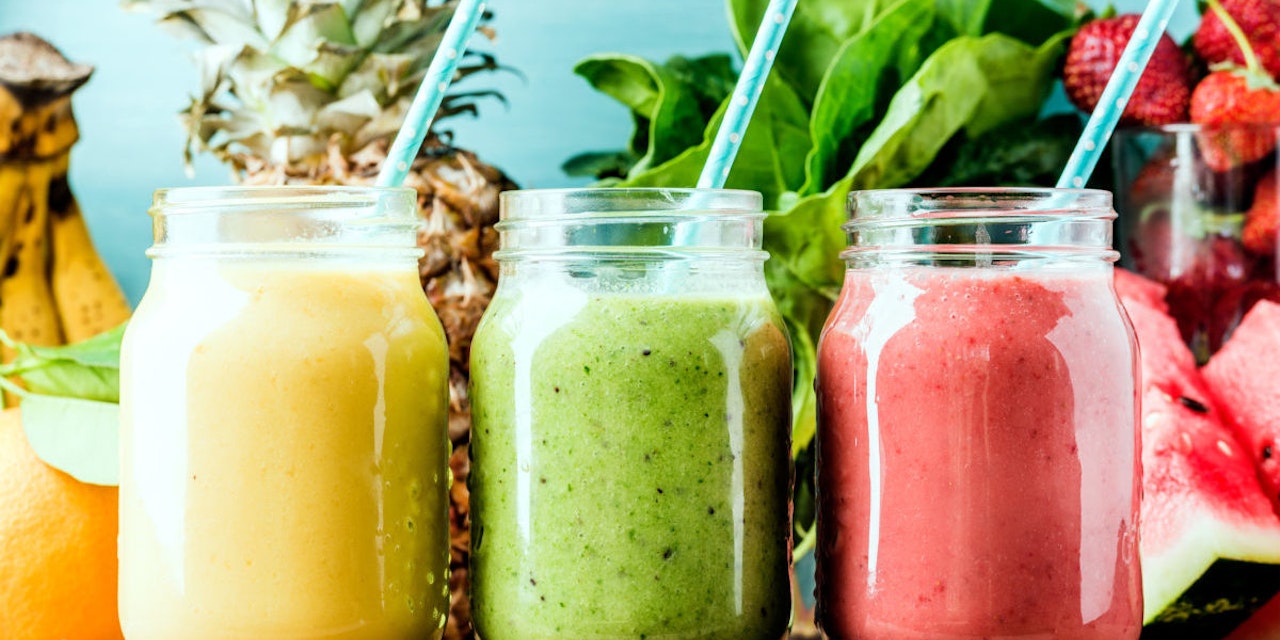10 Tricks to Make Your Smoothies Really Smooth and Delicious
Fortunately, with the right know-how, you can make ultra-smooth smoothies every time – even if they don’t come out as you intended to begin with!…
- Published: 6/9/2017
- Categories:
- 4 min. read

- Published: 6/9/2017
- Categories:
- 4 min. read
Even the most delicious smoothie recipe can lose its appeal if you find that what comes out of the blender is too thick or too thin for you. A smoothie full of chunks that didn’t blend properly is not anyone’s favorite.
Fortunately, with the right know-how, you can make ultra-smooth smoothies every time – even if they don’t come out as you intended to begin with!
Here are 10 tips for making smoothies that always hit the mark:
#1 – Frozen vs Fresh Fruit
Frozen fruit gives a deliciously creamy texture to smoothies and is a great thickener for smoothies that are a bit too runny, especially frozen banana.
You can save prep time by chopping your fruit into chunks and popping it into freezer bags. When you’re ready to make your smoothie, you’ll already have the right amount waiting for you.
The downside of using frozen fruit is that budget blenders will struggle to cope with them so you’ll need one of the stronger bullet or countertop blenders for this tip to work.

#2 – Add Nut Butters
Another option for thicker smoothies is to add some nut butter, such as peanut or almond butter. These give a yummy nutty taste and blend well into the average smoothie.
If you have a high-performance blender, you can even have a go at making your nut butter from scratch!

#3 – Get the Balance Right
For green smoothies in particular, it’s important to get the balance right with your ingredients.
Being too enthusiastic with leafy greens will make it tough to get a well-blended smoothie, but one cup or a couple of handfuls is usually adequate for one serving.

#4 – Use Grains
For a thicker smoothie without using frozen fruit, try adding some quinoa or oatmeal instead. This gives you a boost of fiber and protein, and gives the smoothie a great consistency.
Take note: Quinoa will need to be cooked first.

#5 – Blending High Vs Low
Depending on your blender, it may make for a better smoothie experience if you blend on a low setting to begin with and work up to a higher one, rather than blasting on a higher setting from the off. This will help the blender to process the ingredients more efficiently and quickly.

#6 – Add in Some Dairy
Yogurt is another great thickener and adds a creamy texture to smoothies.
Greek yogurt in particular is full of protein and helps to fill you up.

#7 – Blend in Stages
Using leafy greens in your smoothie? Their health benefits are impressive, but you need to make sure they won’t ruin the smoothness of your smoothie. The trick is to blend your ingredients in stages.
Do the greens first with the liquid base, then add the rest. Far less chance that off-putting green chunks will be left behind!

#8 – Add Liquids
Smoothie come out too thick? Water is the obvious choice for thinning it out but you’ll get more nutrients if you use milk (dairy, soya or nut milk), juice (which you can extract yourself with a juicer or juicer-blender combo), coconut water, or green tea.

#9 – Use Ingredients That Contain Water
Watermelon and cucumber are two examples of ingredients that naturally contain lots of water so they’re a great choice for “watering down” and still providing more nutrients than water itself.

#10 – Invest In a Good Blender
There’s not much you can do if your blender leaves chunks behind that aren’t fully blended, but this is where a high-performance blender can be a smart investment. It will deliver a smooth blending result every time, whereas budget blenders can be much more hit-and-miss with this.
If you use frozen fruit or ice a lot in your smoothies, high-performance blenders are better able to cope with them.

This guest post was written by Jennifer Pelegreen from Easy Healthy Smoothie
Looking for a tasty smoothie recipe? Lifesum offers millions of searchable foods, brands and recipes!
All of the content and media on Lifesum is created and published for information purposes only. It is not intended to be used as a substitute for medical advice or treatment. Users should always consult with a doctor or other health care professional for medical advice. If you have or think you are at risk of developing an eating disorder, do not use the Lifesum app and seek immediate medical help.